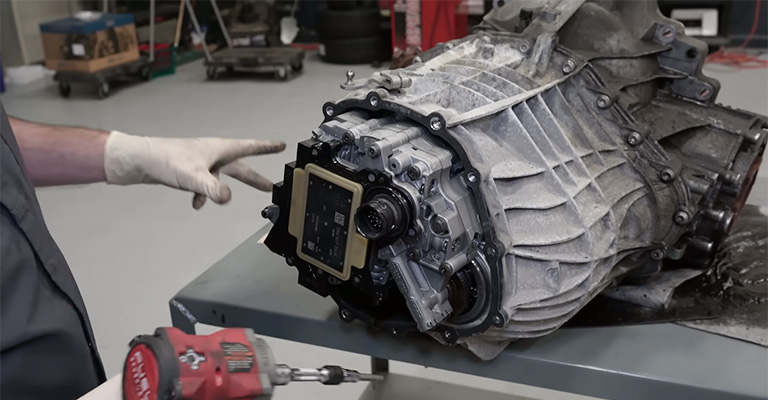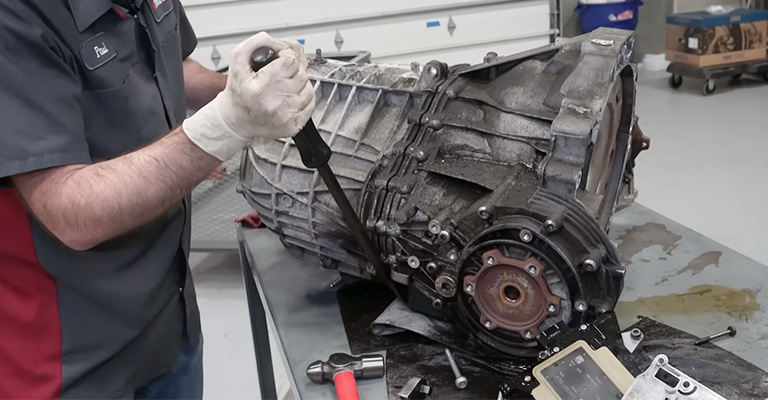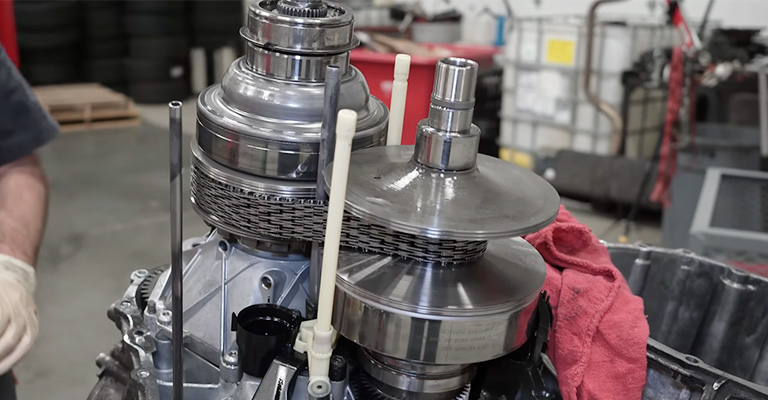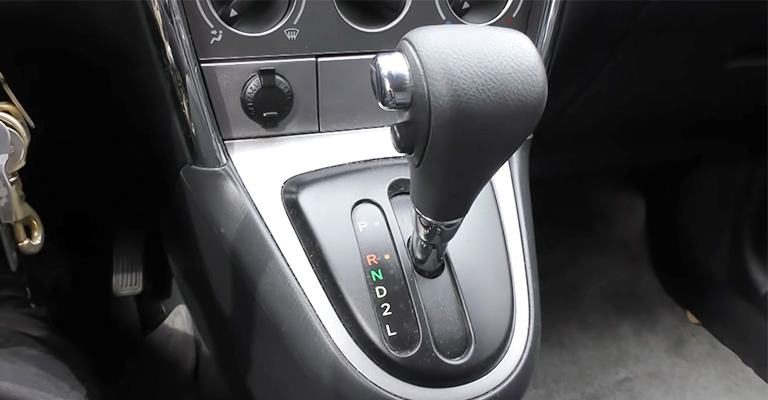Continuously variable transmission (CVT) is considered a novel technology in the automobile industry. But a common question that bothers many is, is CVT faster than automatic?
As a matter of fact, CVT is one of the key reasons cars go faster than the ones with automatic transmissions, and it is a revolutionary breakthrough technology.
Imagine a similar scenario when maglev trains came into operation – simply levitating above the ground made the friction zero, giving incredible speed to the train.
However, CVT has a long way to go, and it helps a lot to know how this type of transmission functions before we start buying our CVT-equipped cars and enjoying the thrilling ride. Let’s keep reading!

How Is CVT Faster Than the Automatic Ones?
The CVT provides the car with similar output as the traditional automatic transmission but implements a completely different mechanism and structure.
Moreover, the inherent state-of-the-art structure and comparatively simpler mechanism have made CVT cars faster than traditional automatic cars.
Automatic Transmissions Have Too Many Components and Get Slowed

The automatic transmission system is designed to have hundreds of components and a fixed number of gears, providing some discretely fixed gear ratios ranging from low to high.
Mechanical Gear Change of Automatic Transmission, Wear It Down
During the gear shifting process for enabling the car speed to go from lower to higher, the engine revs up and down for each shift, and this mechanical shifting and friction cause some power loss, leading to slower acceleration.
CVT Has No Mechanical Gear Change and Gets Faster
On the contrary, the ‘gear change’ in CVT is a very smooth and seamless mechanism, all that happens there is the simple change of width of the cone pairs, the subsequent change in radius of the pulleys, and selecting any gear ratio without any complex mechanical function.
Smooth Transitioning of an Infinite Number of Gear Ratios Made CVT Faster

This smoothness and the unfixed number of ‘gear ratios’ save considerable power, and the simplicity enables flawless and faster acceleration.
How Does CVT Work?
Like any other transmission mechanism, the CVT connects and transfers power from the engine to the wheel system.
The CVT allows the engine to be at its most optimum rpm while working out and setting the best gear ratio required for the wheels, irrespective of the required speed of the car.
CVT is basically made up of only a few basic components.
- A ‘driving’ input pulley for the engine
- A ‘driven’ output pulley for the wheel system and
- A strong metal belt connecting the pulleys
- Some microprocessors and sensors
Each pulley has two back-to-back cones, with the belt set at the notch between them, connecting one pulley to the other.
Actually, there is no gear in this transmission system – or only one gear, if we use the word – with an infinite number of gear ratios.
The pulley connected to the engine is known as the driving pulley, and the other pulley is called the driven pulley, which is connected to the wheel axis.
Moreover, the radii of the pulleys change in a complementary reciprocal fashion. At lower gear, the cones of the output-driven pulleys get closer to each other, increasing the pitch radius.
Similarly, the input pulley has a higher pitch radius because of the cones coming closer to each other. This is the case for the higher gear when the car is at high speed.
This phenomenon enables the transmission to be at any gear ratio because of the flexible option of selecting the desired pitch radius.
Why Was CVT Developed While Automatic Is Still There?
Throughout the last few centuries, several automobile manufacturers, such as Subaru and Saturn, filed patents and incorporated CVT in some of their car models.
Automatic Transmission Free of Clutch

However, the traditional automatic transmission reigned alongside the manual transmission system for many years and later surpassed it.
The traditional automatic transmission relieves the driver from the non-stop leg exercise with the clutch from the manual transmission system.
This eases the hassle of changing gears manually each time during slow-moving traffic on the city roads.
Still, the Too Complicated Structure of Automatic Transmission
Despite being simpler than a manual transmission! The design of the automatic transmission remained as complex as before, with all the gears and cranks, and shafts.
Uneven Gear Shifting of Automatic Transmission

There are some predefined gear ratios like manual transmission; each time the gear shifts from the lower to higher, the car engine RPM spikes and plummets; that is, the transmission affects the engine and makes it work directly.
CVT Has a Simpler Structure
On the other hand, the CVT has no such gears and bulky stuff; rather, it relies on its own simpler design to function for the car engine.
Easy to Implement Mechanism of CVT
While the automatic transmission has a few mechanically fixed gear ratios (from six to ten), the CVT changes the pitch radius of its pulley sets and adjusts the connecting belt.
This is because at the perfect position to supply the required power and torque for that particular operating point of the engine.
Number of Gear Ratios Incomparable to Automatic Transmission
CVT can have an infinite number of gear ratios because it relies only on the position of the cones of the pulley and the metal connecting belt with higher fuel efficiency.
Possible Drawbacks of Automatic Transmission
While it is true that automatic transmission provides us with some great advantages, it is not free from some serious drawbacks.
Difficult to Repair
For example, its highly complex structure and working mechanism make it difficult to repair if anything goes wrong.
Expensive Maintenance
Also, this scenario points to the high cost of purchase and maintenance. Numerous times mechanical gear shifting and friction produce more heat inside the gearbox.
Fluid Overheating, Car Jolts, and Wastage of Fuel
Transmission fluid gets overheated because of this mechanical process of gear shifting, leading to transmission slipping, failure, car jolts, and unnecessary fuel consumption.
Gear Shifting Difficulty While Driving Uphill
Another less desirable drawback is the fact that the drivers have to struggle to find the correct gear during uphill driving.
The car is already working against gravity, yet the simultaneous jolting experience of gear shifting is not something pleasant for the drivers.
Is the Fuel Efficiency of CVT Greater than Automatic?
In recent years, it has become common for automobile manufacturers to introduce more and more car models equipped with CVT.
Not only for faster speed but also for higher fuel efficiency, CVT is becoming increasingly popular.
Single ‘Gear,’ No Friction and Tear
Due to having only one gear’ and the belt-and-pulley system, the acceleration and gear-changing mechanism is totally different from the traditional automatic transmission.
Stable RPM of the Engine During Acceleration
The car can speed up smoothly, with the engine operating at the desired speed and acceleration, compared to the engine rpm revving up and down at each change of gear for automatic transmission. This particular trait has rendered the CVT an excellent fuel efficiency.
Is Any Issue You Need to Be Aware of Regarding CVT?
Despite being the number one choice of transmission type for manufacturers due to its simpler design and mechanism and for car drivers due to CVT cars having awesome speed and efficiency, there are some drawbacks of CVT.
The manufacturers are continuously researching, developing, and upgrading to overcome those flaws of CVT. Still, it is a good practice to be aware of them and avoid them if possible.
Disturbing Noise
A common complaint about CVT is its loud droning noise when the car accelerates. The reason for the noise is that the engine has to rotate at a high rpm while the CVT works on setting and providing the optimum gear ratio, especially during uphill driving.
Solution: A customized, well-designed muffler and silencer can keep this extra noise tolerable.
Fluid Overheating and Transmission Failure
The transmission fluid of the CVT gets overheated quickly, and the design is not good enough to sink off the extra heat, which degrades the transmission fluid. This issue causes transmission failure when the mileage is around 100,000 miles.
Solution: The best practice to delay this failure is to flush the transmission fluid regularly, a little more frequently than it would be needed for automatic transmissions.
Lack of Mechanics Expert on CVT and High Repair Cost
Since CVT is a comparatively new technology in the car industry, requiring a highly skilled workforce to fix the CVT, the repair cost is much higher than the automatic transmission.
Once a CVT goes bad, it is not only difficult to find a skilled mechanic to fix it. But even so, there is a great chance that the CVT will never be the same as it was before the malfunction.
Solution: A good practice is to avoid buying “used” cars with CVT.
Frequently Asked Questions
That depends on how intensively and aggressively you drive! On average, it is once in a few years, and if you are driving an ATV with CVT on rough terrains, the belt needs to be changed annually.
That comes with some good driving practices, such as relying on brakes to stop the car during uphill driving rather than pressing the gas pedals. Another practice is to stop the car completely when shifting the gear stick from reverse to forward and vice versa.
Changing the fluid means leaving one-third of the old transmission fluid as before and adding new fluid. Although it costs more, it is still a better practice to flush the transmission fluid completely (discarding the older fluid totally and using new fluid).
Bottom line
Obviously, with the simpler design and structure, and mechanism, CVT has helped the cars tremendously to accelerate faster and smoother, increase fuel efficiency, and provide a sporty feeling for the drivers.
However, despite the fact of being faster than the automatic transmission, there are some drawbacks the manufacturers need to address about CVT.
And this is one of the reasons the traditional automatic transmission will not lose the market to CVT too soon. It is also undoubtedly worth driving a good quality CVT car, saving fuel, and zooming faster.

Leave a Reply